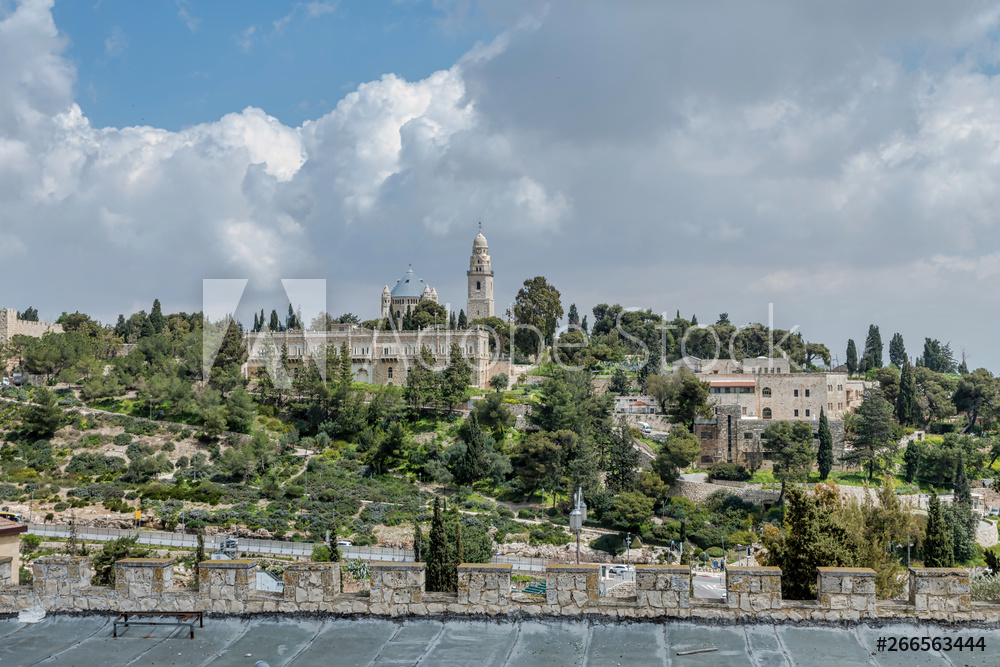Mount Zion is a hill in Jerusalem, located just outside the walls of the Old City. The term Mount Zion has been used in the Hebrew Bible first for the City of David.
It is the highest point in ancient Jerusalem, is the broad hill south of the Old City's Armenian Quarter. Also called Sion, its name in Old Testament times became projected into a metaphoric symbol for the whole city and the Promised Land.
At the end of the Roman period a synagogue was built at the entrance of the structure known as David's Tomb, probably based on the belief that David brought the Ark of the Covenant here from Beit Shemesh and Kirvat Ye'arim before the construction of the Temple.
During the 1948 war, Mount Zion was conquered by the Harel Brigade on May 18, 1948 and became the only part of the Old City to stay in Israeli hands until the armistice. At first it was linked to the Jewish neighborhood of Yemin Moshe across the Valley of Hinnom via a narrow tunnel, but eventually an alternative was needed to evacuate the wounded and transport supplies to soldiers on Mount Zion.
Interestingly enough, legend has it that Sultan Suleiman the Magnificent initially meant for Mount Zion to be inside the walls of the Old City. However the Turkish engineers who were planning the restoration of the walls accidentally left Mount Zion and King David's Tomb outside the walls, prompting the livid sultan to execute them.
Several important events in the early Christian Church are likely to have taken place on Mount Zion: The room of the Last Supper which served as both a mosque and a church throughout its long history, King David's Tomb, the Chamber of the Holocaust, The appearance of Jesus before the high priest Caiaphas, believed to have been at the site of the Church of St. Peter in Gallicantu (where Peter denied Jesus), The Council of Jerusalem, around AD 50, in which the early Church debated the status of converted gentiles, perhaps also the site of the Cenacle, and the Protestant Cemetery. In addition, Oskar Schindler is buried here as a righteous gentile, and the Dormition Abbey is located here.
December 06, 2020
Tags :
ISRAEL
Subscribe by Email
Follow Updates Articles from This Blog via Email





No Comments